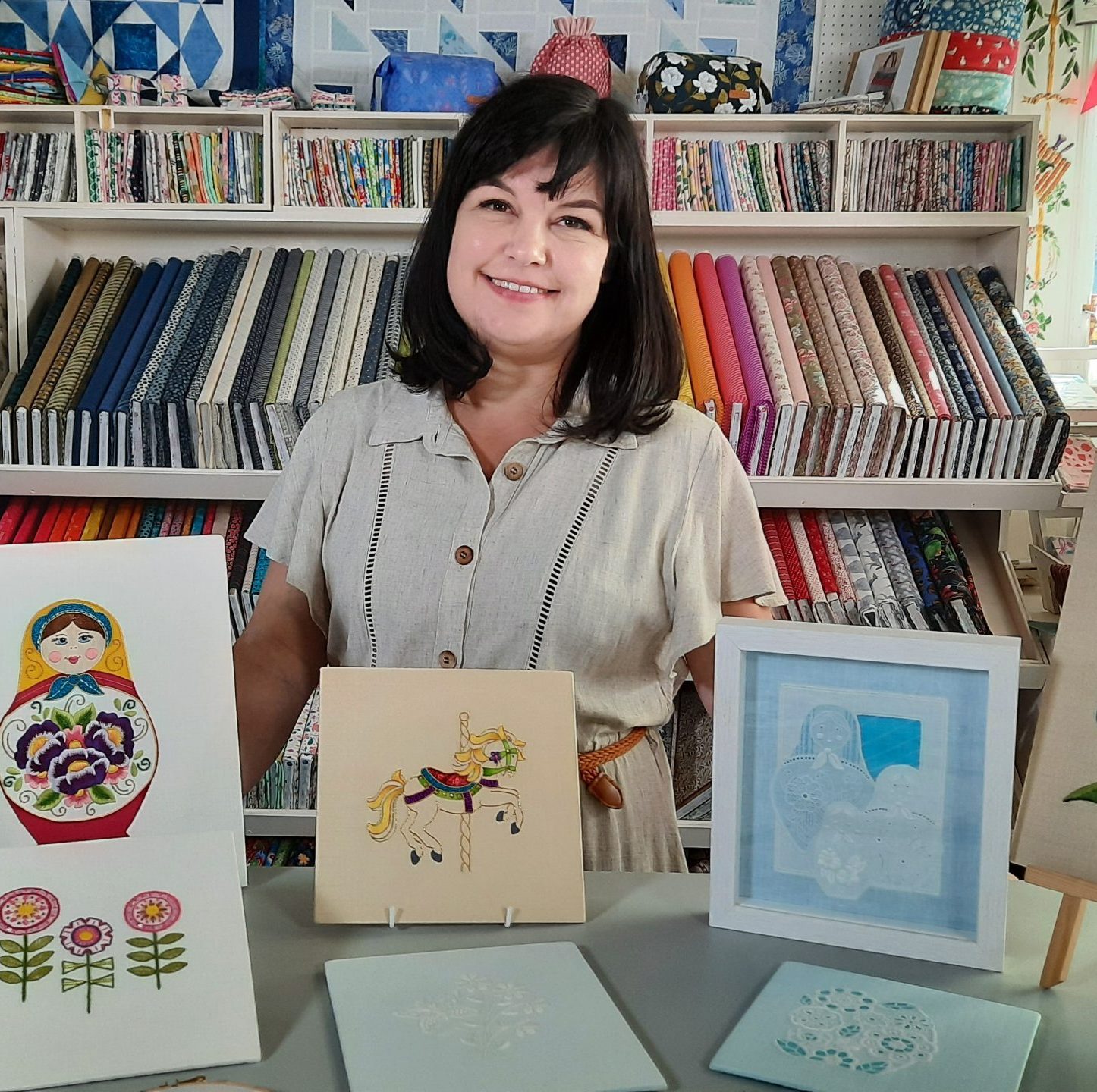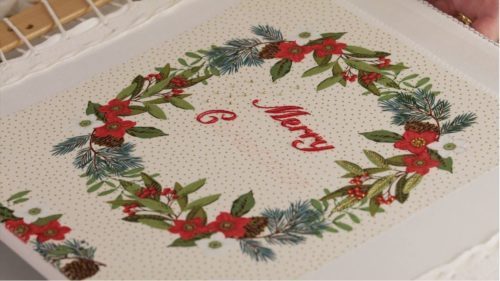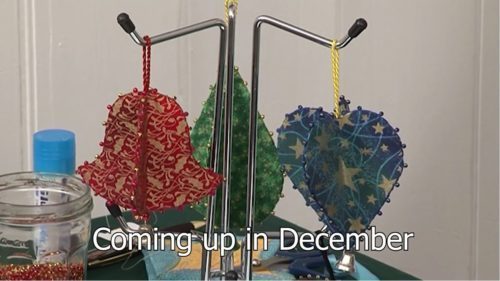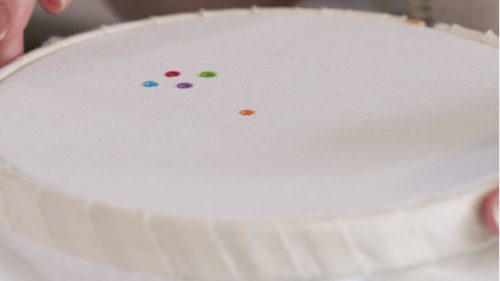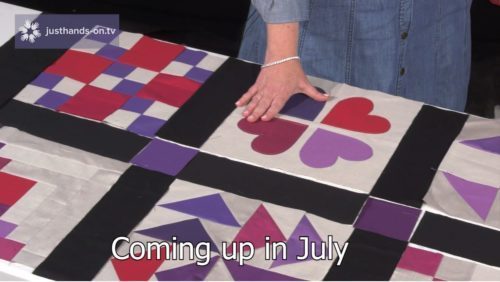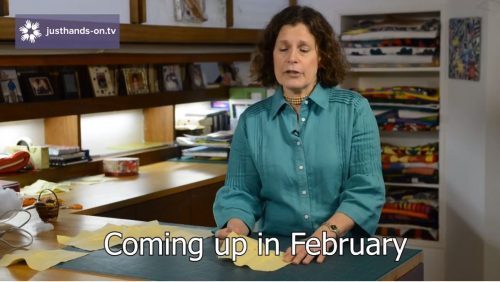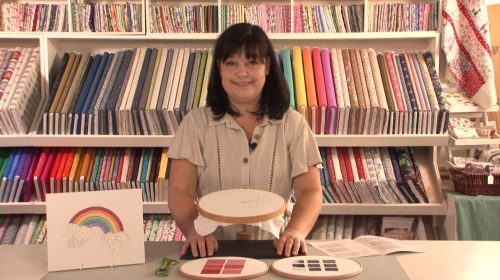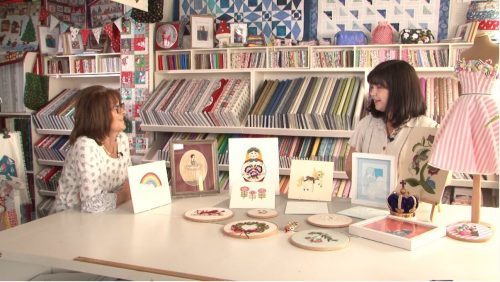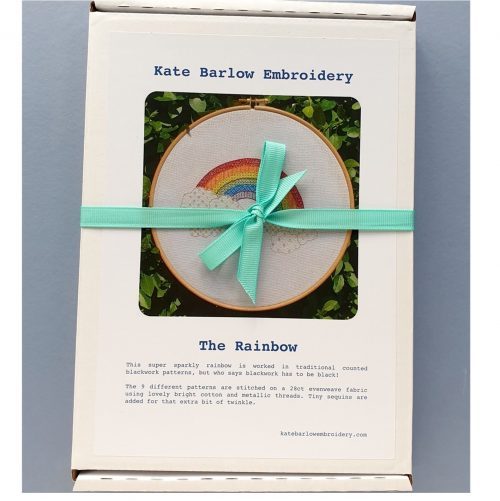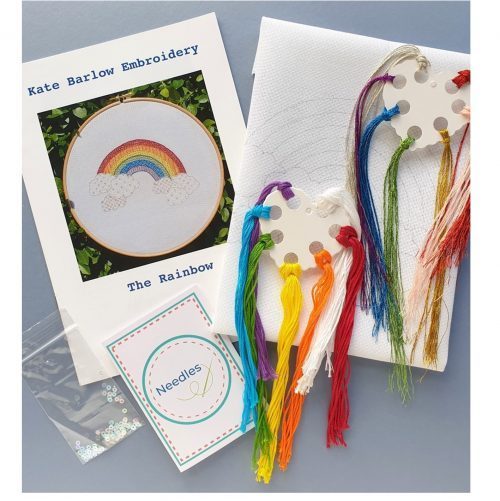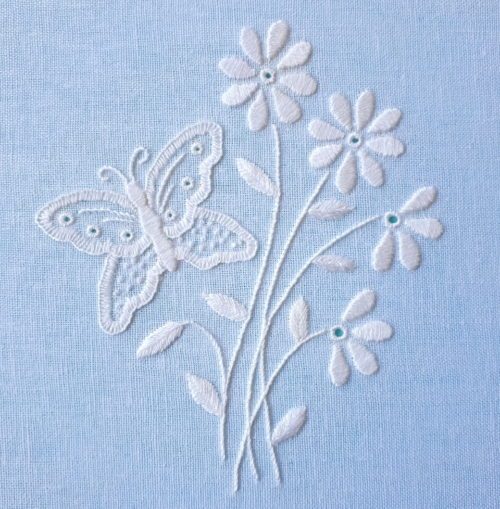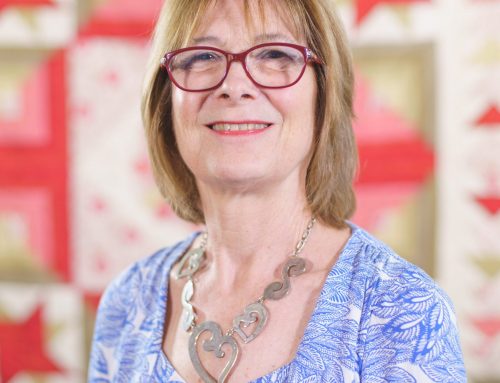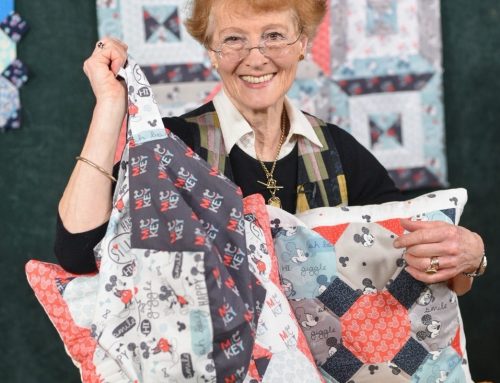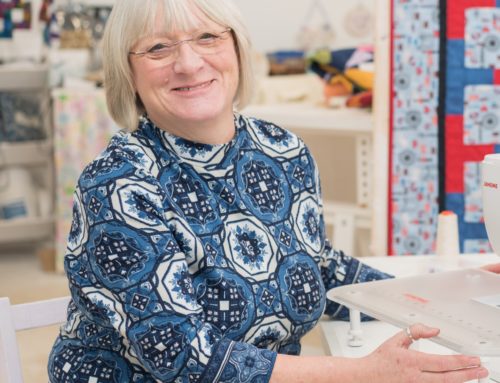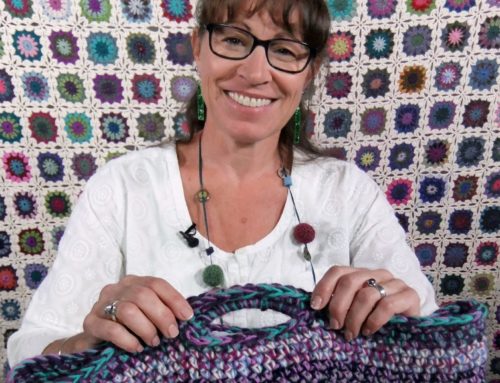About Kate
Kate grew up in North Wales and originally studied costume at the Royal Welsh College of Music and Drama in Cardiff before graduating in 2001 with a BA Hons in Theatre Design. Following this she worked as a freelance costume maker at Glyndebourne Festival Opera and then as part of the Touring Wardrobe department at the Welsh National Opera. Kate has always loved hand embroidery, and got the stitching bug from her Nan at an early age, so in 2013 she decided to take the plunge and re-train as an embroidery tutor at the Royal School of Needlework (RSN) at Hampton Court Palace.
Kate graduated from the Future Tutors Programme at the RSN with distinction in 2016. During the course she studied many traditional hand embroidery techniques including goldwork, Jacobean crewel work, blackwork, stumpwork and silk shading. In 2015 Kates Advanced Silk Shaded budgie “Smuggler” was accepted by the Royal Academy of Arts for their annual Summer Exhibition. The piece was also made into a greetings card.
Kate loves to design her own embroidery kits, using traditional techniques in a contemporary way. She also likes to combine her embroidery with her love of historical dress, creating kits based on original pieces. Her classes can cover all levels of ability, from absolute beginners to more advanced stitchers. When she’s not involved in freelance projects Kate works as a stitcher for the RSN in their commercial studio, working on conservation, restoration and private commissions.
Kate has taught for the Royal School of Needlework at Hampton Court Palace, RSN Bristol, Bath Fashion Museum, Williamsburg School of Needlework in the U.S., and the RSN 2018 Summer School in Lexington, Kentucky. She also teaches for The Craft Sanctuary, Needlework Tours and Cruises, The Alpine Experience, Crewelwork Company, and justhands-on.tv !
In 2018 Kate was runner up in The National Needlecraft Awards 2019 Embroidery Designer of the Year category.
Signature Technique
Silk Shading
Top Tips
- You invest a lot of time and love in your stitching so always buy the best quality materials and equipment you can afford. This will give you better results and will create pieces that will last and hopefully become heirlooms!
- To help stop your threads from becoming knotted and tangled, work with a fairly short length in the needle. About 30cm is a good length and it will also help to maintain the condition of the thread.
- Don’t be afraid to have a go! Even the best stitchers get very good at unpicking! One of the nice things about hand embroidery is that you can take things out if you’re not 100% happy.
- Use traditional techniques in a contemporary way to create beautiful textile art.
- Practise, practise, practise. I know it’s a bit of a cliche but every has to start somewhere are the more you stitch the better you get.
- Don’t underestimate the healing effects of hand sewing. Your projects don’t need to be complicated, even simple stitching can bring great pleasure and calm.
Videos
Posts
7th February 2014
Here we are in February (after a 5 week January [...]
Printing images onto fabric
I wish to make a cot quilt for my expected grandchild and would like to make some of the squares personalised by printing images from my computer onto the fabric. I see there are several methods of achieving this and wonder if in your experience you could recommend a tried and tested way. As this is for a baby, it will obviously be subjected to washing so the method needs to produce waterproof squares Answer: As far as I am aware the fabrics that have been designed to go through your printer for use with your computer work well - and I am not aware that the brand makes any difference. These should be readily available from your quilt shop (or www.creativequilting.co.uk).
You could also use a method which uses fixing ink - but that is a little messier - but used by the textile girls a lot and I think produced by a company called Electric Quilt (who design computere software) and I know is stocked by The Cotton Patch and possibly Art Van Go as well as they are great suppliers of all things required by textile artists.
Does the Microtak gun make holes in the quilt?
Well its a yes and a no; the original gun did have HUGE tags that made really nasty holes and I refused to use or stock them (I owned a quilt shop at the time); however the current generation has a much smaller needle and tiny tags which hold the layers better since we have moved to flatter wadding and don't make holes in the fabric. I use them all the time and despite having several 000 in each box seem to be constantly running out!!!!
TIP: do invest in a tack remover as well as this will keep your quilt safe from little snips from your scissors and also stop you being tempted to use your best scissors to remove them (and spoil your scissors) NB: all these products are in the shop

